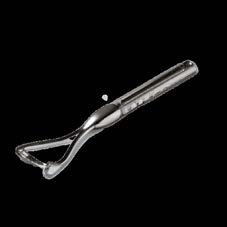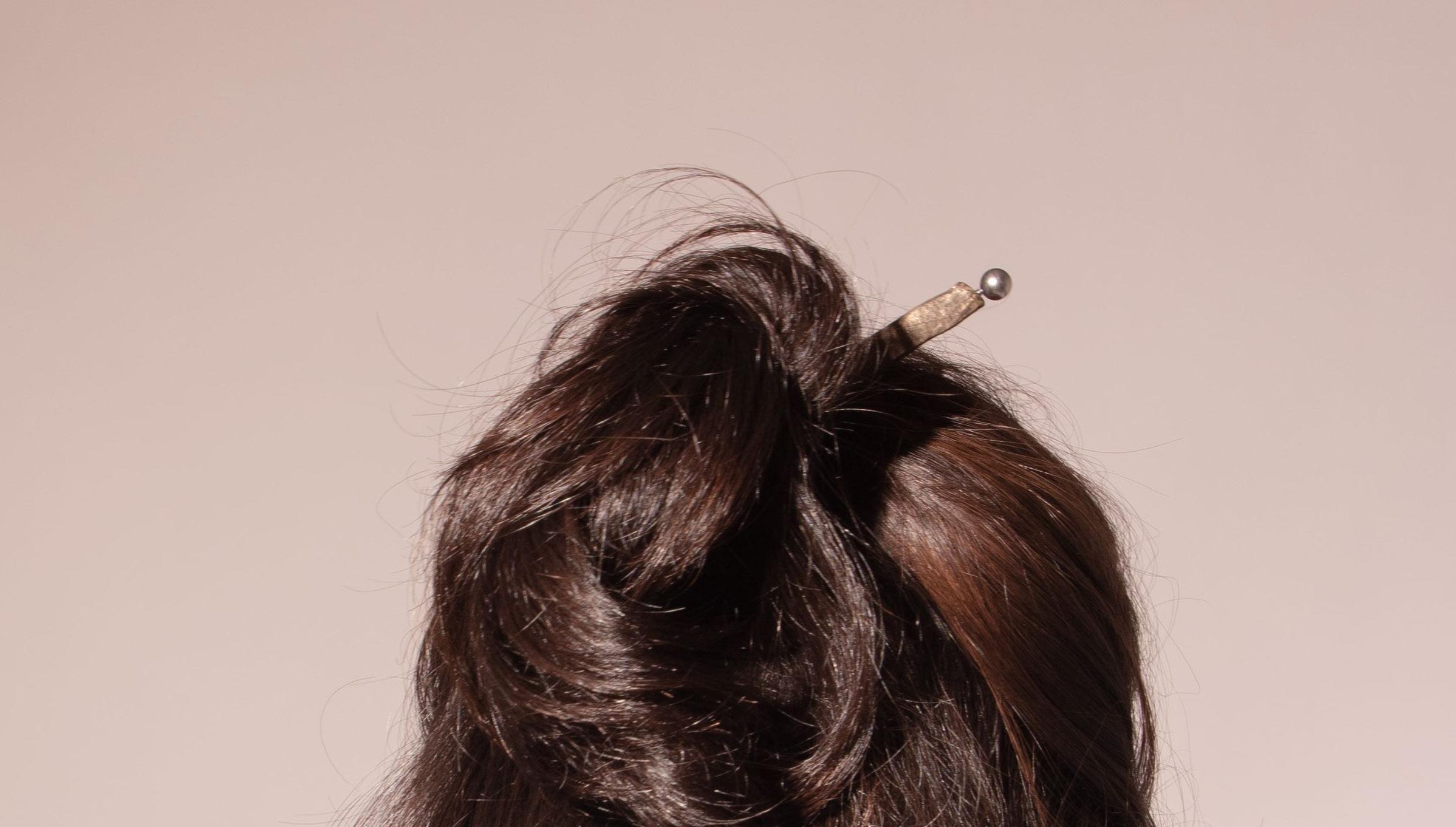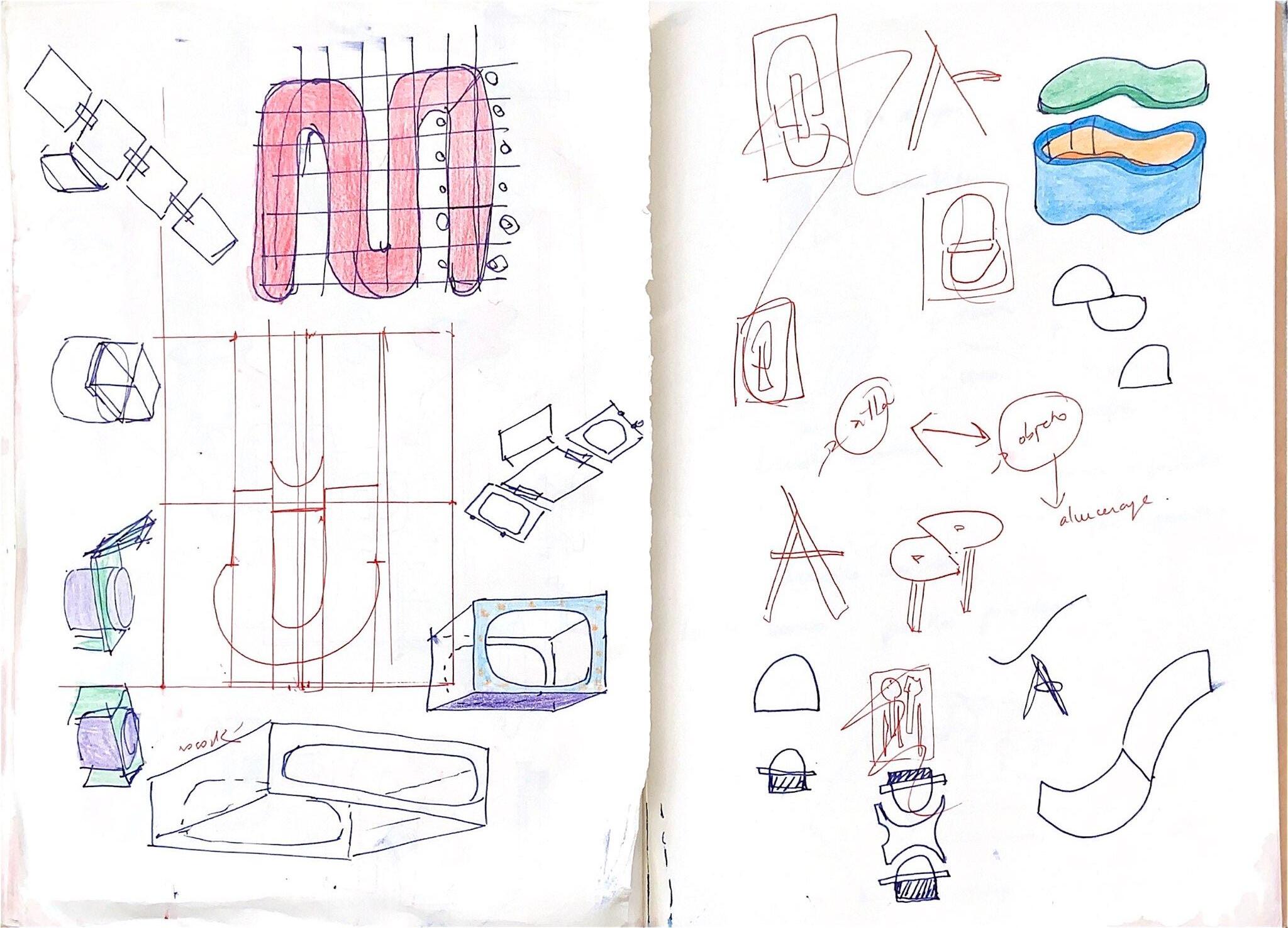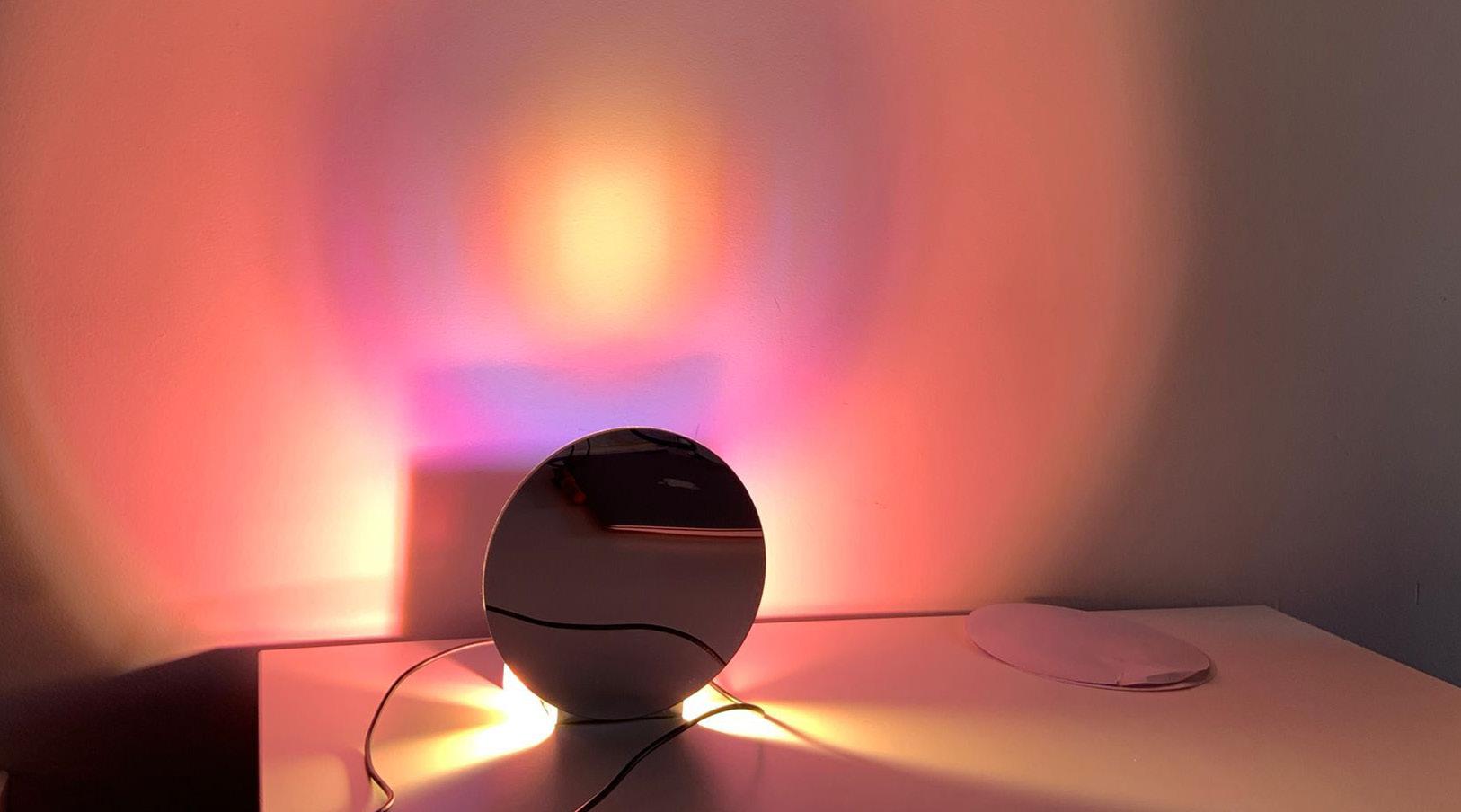 Isabel Santidrián portfolio + CV
Isabel Santidrián portfolio + CV
I am a product designer who has just finished my studies at the IED in Madrid.
The interest in crafts led me to want to delve into this concept, understanding it as a fusion of multiple disciplines.Throughout my career, the projects that I have developed have been through different techniques: 3D modeling, manual layout, writing and analog photography.Art in its multiple forms has accompanied me throughout my life.Getting to know people and their stories is something that fascinates me and it has been through design where I have found a solution.
 Hi!
Isabel Santidrian, 1998 Madrid
Hi!
Isabel Santidrian, 1998 Madrid
ACADEMIC TRAINING
2016-2019
Degree in architecture Higher Polytechnic School of Architecture CEU San Pablo
LANGUAGES
Spanish
English
SKIILLS

Adobe ILLUSTRATOR INDESIGN PHOTOSHOP
Microsoft
2019-2022


Degree in product design IED Madrid
PROFESSIONAL EXPERIENCE
2023
Three-month curricular internship PLAF Estudio
OTHER EXPERIENCES
2018
Collective exhibition of Architecture and Urbanism in Chinchón curated by the CEU San Pablo
2021
Participation in the construction of the Carnival of companion species in Matadero Madrid in collaboration with BUJ Studio
2022
Collective furniture exhibition in collaboration with Casa do Brasil.
WORD EXCEL
Rhinoceros
VRAY
Manual prototyping
3D printing
Laser cut
HOBBIES
Analogic photograph

Sewing and pattern making
Contemporary dance
Writing and poetry
CONTACT
+34 639123119
isabel.santidrian@gmail.com
@ssantidrian





WHY CONTEXT
RAINFOREST focuses on designing in the house of Brazil. Knowing the Casa do Brasil we can first observe that the people who inhabit it are foreign students staying in Madrid. The Casa do Brasil in Madrid is a student residence located in the capital of Spain. It is a place that mainly welcomes Brazilian students who come to study at universities in Madrid. The residence is located in the Chamberí neighborhood, a very central and well-connected area. Student life at Casa do Brasil is very dynamic and enriching. The environment is multicultural, as young people from different parts of Brazil and from various academic disciplines coexist. This provides the opportunity to build friendships and bonds with people from different cultural and academic backgrounds.
Rest and leisure time are important aspects in the lives of Madrid students, as they allow them to relax, disconnect from studying and recharge their batteries.
My lounger is focused on those essential moments of rest, either individually or with others, that we all need in our day-today activities abroad. Absorb our vitamin D and now that spring has arrived, listen to the song of swallows and swifts.
Observing the spaces that make up the residence, one of the things that most attracts attention is the little use that is given to the exteriors. I think one of the wishes of the people who live in the center of the city is to be able to enjoy a bit of green, to spend more time outdoors at different times of the day. That is why I think it is a luxury to have a private patio and green areas around the entire residence.

Rainforest is based on the idea of connecting with the exterior from the city, the industry. Above all, it is paying homage to one of the most essential parts of Brazil: the Amazon jungle, that exuberant flora, that humidity, and connecting it with Madrid, with the University City, with industry and accepting that we are in the Chamberí neighborhood.
Observing the colors of the Brazilian flora, it is interesting to try to abstract at a sensory level what it transmits to us. On the one hand the smells, on the other hand the shapes and obviously the colors. I have not wanted to focus on the generic colors but also on the small inhabitants of this flora such as flowers, fruits and small exotic animals.
Starting from the previous basic shapes, we begin to combine them to see which shapes are best suited to our aim as a lounger. We can take it to a more circular element but the ergonomics we are looking for would be difficult to determine. Working with straight lines always gives interesting results, but we cannot stay in a basic structure. The goal is to make it as light and low as possible. The combination of squares with colors becomes essential in contrast to such a gestural structure. Surely it is carried out by means of a textile.
Mainly the materials used are iron rods, with a diameter of at least one centimeter.

For braiding we opted for nylon straps since being outdoors they will need minimal resistance.
The machining process is, starting from the iron rods it is folded in parts, once folded it is welded by planzat and elevation. The damage is then sanded down and the primer is applied. Later it is lacquered with an epoxy paint of the chosen color. Finally, the straps are braided and sewn with nylon threads, very important to avoid openings and maintain tension.

As I mentioned before, in this project the choice of materials is essential, since that determines and reinforces the idea of being in the city and the element on which we lie down is also born here.


WHY CONTEXT
Warida is born from the similarity with nature and how it coexists with the animals that surround it. Most of the animals that inhabit the forests need to take refuge when the rain arrives or when a danger lurks using wood, hollow trees as a lair or holes in the ground. It is there where they live and where they keep their heat in winter. To create Warida I wanted to make a journey that is born from a tree such as the Red Oak since its wood transmits that warmth that we are looking for. Starting from planks of wood, we use an industrial milling machine to draw these sinuous and organic shapes that once again remind us of something alive and natural. The way of treating and subtracting the wood by means of the milling machine is precise to generate a unique vacuum in the wood, a process similar to that of tattoos, something recently begun to be valued. That is why the term Warida, written as a colloquial language but with a very primitive meaning (in spanish guarida means haunt).
CONSTRUCTION
At a constructive level, the shelves would be embedded in the exterior structure by means of pieces like a puzzle, however, the pieces on the outside would have to be glued, so the design would be sold once assembled and would not be suitable for exchanging pieces with each other.

MATERIALS
Red Oak gives us a perfect wood for a project like this, since its hardness ensures stability and reinforces the most fragile areas. At the same time, generating a little more weight makes the rollover more difficult.
The ribbon stripes of its wood would be seen so it would go perfectly with the design idea. At the same time, its color is not too striking to bother having so much material and it would allow the other elements to coexist within it.

CRUDA


Set of pieces of jewelry made up of three main elements. The name of Cruda refers to both the experience that the user lives, as well as its design and materiality. Cruda was born as an element engendered between the most rudimentary and the most current and trending activities of generation Z. Through this design, an attempt is made to generate a sensation of familiarity, since the elements made of prehistoric sillex are recognizable and recognized by all. A pure element of little complexity, while the functions for which it is designed are in a few centuries of them. It is generating a temporary distortion in which we slip, a game and at the same time a demand for presence and attention. Propose scenarios, not from the future, but from another time line.

Generation Z initially encompasses those born between the early 90s and the mid2000s. But this range is clearly wide, so different ramifications are created that drink from other generations. One of the most important characteristics of this generation is the way they interact with technology. Another main characteristic is the over stimulation and the way of socializing and interacting. In this generation, the search for identity becomes much more fluid and variable, unlike other previous decades, as well as prolonged, which generates a prolonged adolescence until later ages. All this in an environment of information overload and mega globalization where the products bought today become obsolete tomorrow.
Starting from this idea of origin and pureness, formally Cruda intends to convey that. Purity in its rawest version. It is the way of learning that we have in generation Z, claiming transparency and at the same time the defect, is to unite performance with something that is still half done. That is why formally the jewels themselves are unique for each user. It has no gender, it does not have a closed shape or clean finishes. Raw drinks from DIY, but in a conceptual way. They are almost paleolithic objects brought to the Z generation as much as possible.


FOR WHOM Users/Persons hybrid identities
To understand this whole project it is necessary mainly to talk about hybrid identities. A hybrid identity is not a mixture, a fusion or a miscegenation, but a step further, something that is born from it. In a hybrid identity, several emotional or social spheres can intersect, the main characteristic is that in that intersection there is no percentage of each part that composes it, nor a clear resolution, that fluidity, movement and contradiction is already an identity. These areas can range from gender identity, racial identity and origin, spiritual identity and affective sex, among others. A design that accompanies this hybridization cannot be a design focused in a single direction. It is necessary to consider the design based on how we carry out and live these hybrid experiences.
By Schalparelli internet and Homrestyletattoo

How could we transfer that fluidity and movement to a tangible and static object?










PROBLEM temporary homes

One of the biggest problems that generation Z is experiencing is settling in a fixed place. We have that ease of being nomads and being in Madrid as soon as Erasmus or sharing a flat with strangers, but precariousness and constant change mean that perhaps as far as home is concerned we do not end up establishing a deep-rooted bond. The home is also transferred to the digital, generating a network of connections and virtual spaces to share and create, something that generates continuity and stability, which saves your memories and adds new ones in a timeline where your location or time does not matter.
WHAT DOES GEN Z NEED IN THEIR HOMES?
Generation Z (people born between 1997 and 2012) have different needs and preferences. Wishes for Generation Z in their homes include:
• Flexibility and adaptability: Generation Z values homes that can be easily transformed and adapted to different activities and changing needs.
•Technology Integration: Gen Z values homes that are equipped with technology and high-speed internet connectivity.
• Sustainability and respect for the environment: Generation Z values environmentally friendly design and energy efficient homes.
• Comfort and relaxation: Generation Z values homes that provide a warm and welcoming environment.
• Personalization and self-expression: Gen Z values homes that allow them to express your individuality and personal style. These needs and preferences may vary depending on individual circumstances, but reflect general trends of what Gen Z is looking for in a home.

IAS


On the other hand, something that has tremendously obsessed me has been the body and its architecture as well as its functionality and as a way of creating, a great source of inspiration has been artificial intelligence. Not only as makers of images and texts but also as thinking heads. Inspired by some artists who have already dealt with these issues, I find it inspiring the way they generate ideas based on virtual memories, in a similar way to what we do with our own memories. It’s because I was immediately curious as to how this could be transferred to a scenario that is still being built or that doesn’t even exist.
ANTHROPOLOGY

Continuing the idea from the dissociation, I decided to raise this observation from anthropology, as if I did not belong at all to this current moment. Firstly, I looked at the way that man has previously had to meet his ancestors. Especially in the way that interests me, which is through objects. As through the objects they found in the house they were able to know their entire environment, their beliefs and their ways of socializing.




WHY CONTEXT
Loli starts from the idea of redesigning the experience in the Mercado de San Fernando, a neighborhood market located in the center of Madrid. This market delights people who live in the Lavapiés and La Latina neighborhoods, neighborhoods known for their Castizo ancestry, and above all for El Rastro, an antiques market that is held every Sunday. This market during the day functions as a traditional market while on weekends it serves as a gastronomic meeting where you can taste dishes of all nationalities.
Referring to its origin, we start in a way that is reminiscent of those traditional Spanish flamenco trablao chairs. This form can only be appreciated from one of the faces since the chair is foldable. Good storage was essential since being a market with two different utilities, the chairs need to be stored during the time that it works as a market.
MATERIALS
The main material is ash plywood, a material that is easy to machine, and at the same time gives it that fresh and natural look. The blue paint on the edges generates a touch of color but without standing out excessively.

Images of the San Fernando Market where you can see the limited space between the aisles where people sit down to eat. The proposal is to be able to move your seat to an interior patio and return it when finished. Each stall would have a number of seats that can be stored on top of each other at each food stall.



Bocetos sobre las múltiples formas de encajar los asientos, exploración manual.


 The chair folds with a hinge and on the opposite side it closes with some lace located on the seat so that it does not move once you sit down.
The chair folds with a hinge and on the opposite side it closes with some lace located on the seat so that it does not move once you sit down.
INSTRUCTIONS FOR USE
The user would carry the chair with a hole designed for it in the lower area. Once it reaches your site, it opens it and fits it into the area dedicated to it. He sits sharing the space with the other users.




WHY CONTEXT
Lava forms a set of experimental luminaires through LED light. Based on the ready to made philosophy, I use waste materials from our workshop to experiment with light and propose new lighting systems.
LAVA 1
The first luminaire plays in this case with an LED strip. Inspired by the work of Olafur Eliasson, if you seek to play with colors, the projection and reflection of them through the horizontality that the strip provides us.
LAVA 2
The second luminaire deals with the theme of color in a circular way, trying to generate a gradient of warmer colours, which opens or closes depending on the distance. It is designed to be placed in front of a clean wall so that this reflection of color can be appreciated to its fullest extent. This luminaire wants to play with the trompe l’oeil of using a reflective material that deceives the operation of an object and at the same time, when turned on, works like another.

Both luminaires would be designed for areas of the home where light is not always added. Through manual exploration, we experimented with materials that we had around us, assembling small luminaires in a short period of time. These luminaires are a small experiment based on an LED board and an LED strip.
MATERIALS
The materials used for luminaire 1 would be mainly metal and methacrylate. The metal would be intended for the part where the LED strip would be located, since it overheats with use and the metal could absorb the heat. The methacrylate would be discarded pieces from the university workshop, so it would be reused material, which in turn allows you to play with color In the second luminaire we use the same materials, but this time with mirrored methacrylate on the front that allows us to cover all the operation, generating that surprise effect.





In this short experimentation we have played with artificial light, but it may also open a door for a future to combine artificial light with natural light and experiment with it. Being limited with the materials, it has generated that those used are exploited trying to get the color as much as possible while taking into account that led to an industrialized design it would be interesting to design the assembly, disassembly and packaging.
 Manual exploration on the projection of an LED panel.
Exploration on the projection of an LED panel and its reflections.
Manual exploration on the projection of an LED panel.
Exploration on the projection of an LED panel and its reflections.



